Decerebrate mouse model for studies of the spinal cord circuits
- PMID: 28277546
- PMCID: PMC8495891
- DOI: 10.1038/nprot.2017.001
Decerebrate mouse model for studies of the spinal cord circuits
Abstract
The adult decerebrate mouse model (a mouse with the cerebrum removed) enables the study of sensory-motor integration and motor output from the spinal cord for several hours without compromising these functions with anesthesia. For example, the decerebrate mouse is ideal for examining locomotor behavior using intracellular recording approaches, which would not be possible using current anesthetized preparations. This protocol describes the steps required to achieve a low-blood-loss decerebration in the mouse and approaches for recording signals from spinal cord neurons with a focus on motoneurons. The protocol also describes an example application for the protocol: the evocation of spontaneous and actively driven stepping, including optimization of these behaviors in decerebrate mice. The time taken to prepare the animal and perform a decerebration takes ∼2 h, and the mice are viable for up to 3-8 h, which is ample time to perform most short-term procedures. These protocols can be modified for those interested in cardiovascular or respiratory function in addition to motor function and can be performed by trainees with some previous experience in animal surgery.
Conflict of interest statement
Figures
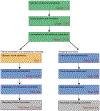







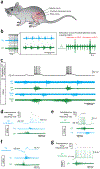
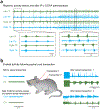
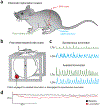
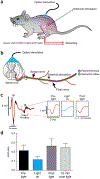
Similar articles
-
Development of a decerebrate model for investigating mechanisms mediating viscero-sympathetic reflexes in the spinalized rat.Am J Physiol Heart Circ Physiol. 2019 Jun 1;316(6):H1332-H1340. doi: 10.1152/ajpheart.00724.2018. Epub 2019 Mar 15. Am J Physiol Heart Circ Physiol. 2019. PMID: 30875256 Free PMC article.
-
Distribution of Spinal Neuronal Networks Controlling Forward and Backward Locomotion.J Neurosci. 2018 May 16;38(20):4695-4707. doi: 10.1523/JNEUROSCI.2951-17.2018. Epub 2018 Apr 20. J Neurosci. 2018. PMID: 29678875 Free PMC article.
-
Locomotor pattern in the adult zebrafish spinal cord in vitro.J Neurophysiol. 2008 Jan;99(1):37-48. doi: 10.1152/jn.00785.2007. Epub 2007 Oct 31. J Neurophysiol. 2008. PMID: 17977928
-
Ubiquity of motor networks in the spinal cord of vertebrates.Brain Res Bull. 2000 Nov 15;53(5):627-34. doi: 10.1016/s0361-9230(00)00396-8. Brain Res Bull. 2000. PMID: 11165798 Review.
-
Glutamatergic reticulospinal neurons in the mouse: developmental origins, axon projections, and functional connectivity.Ann N Y Acad Sci. 2013 Mar;1279:80-9. doi: 10.1111/nyas.12054. Ann N Y Acad Sci. 2013. PMID: 23531005 Review.
Cited by
-
Biphasic Effect of Buspirone on the H-Reflex in Acute Spinal Decerebrated Mice.Front Cell Neurosci. 2020 Jan 15;13:573. doi: 10.3389/fncel.2019.00573. eCollection 2019. Front Cell Neurosci. 2020. PMID: 32009904 Free PMC article.
-
Impact of anesthesia, sex, and circadian cycle on renal afferent nerve sensitivity.Am J Physiol Heart Circ Physiol. 2021 Jan 1;320(1):H117-H132. doi: 10.1152/ajpheart.00675.2020. Epub 2020 Nov 20. Am J Physiol Heart Circ Physiol. 2021. PMID: 33216622 Free PMC article.
-
Emergent epileptiform activity in spinal sensory circuits drives ectopic bursting in afferent axons and sensory dysfunction after cord injury.Pain. 2025 Feb 1;166(2):e27-e35. doi: 10.1097/j.pain.0000000000003364. Epub 2024 Aug 6. Pain. 2025. PMID: 39106457
-
Control of mammalian locomotion by ventral spinocerebellar tract neurons.Cell. 2022 Jan 20;185(2):328-344.e26. doi: 10.1016/j.cell.2021.12.014. Cell. 2022. PMID: 35063074 Free PMC article.
-
In vitro longitudinal lumbar spinal cord preparations to study sensory and recurrent motor microcircuits of juvenile mice.J Neurophysiol. 2022 Sep 1;128(3):711-726. doi: 10.1152/jn.00184.2022. Epub 2022 Aug 10. J Neurophysiol. 2022. PMID: 35946796 Free PMC article.
References
-
- Kiehn O Development and functional organization of spinal locomotor circuits. Curr. Opin. Neurobiol 21, 100–109 (2011). - PubMed
-
- Dougherty KJ et al. Locomotor rhythm generation linked to the output of spinal shox2 excitatory interneurons. Neuron 80, 920–933 (2013). - PubMed
-
- Lanuza GM, Gosgnach S, Pierani A, Jessell TM & Goulding M Genetic identification of spinal interneurons that coordinate left-right locomotor activity necessary for walking movements. Neuron 42, 375–386 (2004). - PubMed
Publication types
MeSH terms
Grants and funding
LinkOut - more resources
Full Text Sources
Other Literature Sources

